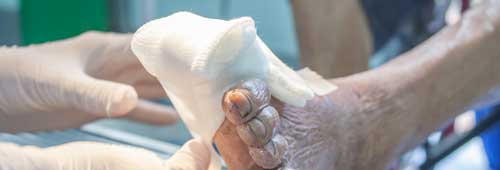
Clinical analytics
Reaching accord about the NSW Health five-year vision for clinical analytics

Leading Better Value Care
Gathering descriptions of different local organisational models aiming to achieve better clinical care
Yarning about the indirect impacts of COVID-19
The purpose of the inquiry was convergent, and the nature of the evidence sought was descriptive.
Nearly everyone has been affected in some way by the coronavirus disease 2019 (COVID‐19) pandemic, and it is a public health risk for Aboriginal peoples and communities. Concerns about the indirect impacts of COVID‐19, caused by missed, delayed and avoided healthcare — not as a direct consequence of COVID‐19 infections — are shared internationally.
The knowledge holders were Aboriginal people and communities across NSW. Talk-based methods in a group context were preferred, and in response to COVID-19, interactions were virtual.
Drawing on the ancient and traditional yarning process, a group of 12 Aboriginal community members from across NSW shared their experiences and perspectives regarding the indirect impacts of COVID‐19. The discussions occurred over three separate sessions. Six group members captured the key messages identified from the talks and synthesised the findings into three main themes.
More information
Revealing issues from consumers about chronic wound care in NSW
The purpose of the inquiry was expansive, and the nature of the evidence sought was descriptive.
The Chronic Wound Management initiative provides opportunities to improve the prevention and holistic management of chronic wounds. Understanding how consumers and their carers view and experience the provision of wound care is key to improving the quality of services and optimising outcomes.
The knowledge holders were people who had received care in NSW for a chronic wound in the last two years. Two consumer partners identified a preference for talk-based methods and the need to provide people with options to participate individually or in a group context. In response to COVID-19 restrictions, experiential evidence methods were restricted to virtual options only.
Semi-structured, virtual, individual interviews and focus group discussions were selected and conducted with ten healthcare consumers and carers to explore their experiences of a chronic wound. The project team completed the analysis with support from two consumer partners.
More information
Reaching accord about the NSW Health five-year vision for clinical analytics
The purpose of the inquiry was convergent, and the nature of the evidence sought was prescriptive.
Clinical analytics is a rapidly developing area of informatics and knowledge mobilisation, which has huge potential to improve healthcare in the future. The Clinical Analytics Working Group was charged with developing a five-year vision for NSW Health.
The knowledge holders were 32 experts – practising clinicians, patients and consumers, managers, policymakers, data scientists and academics. The panel was selected using explicit criteria.
A modified Delphi process was undertaken to elicit expert views and to reach a consensus. The process included a combination of face-to-face workshops, traditional Delphi voting via email, and innovative, real-time iteration between text re-formulation and voting until consensus was reached.
More information
Gather descriptions of different local organisational models aiming to achieve better clinical care
The purpose of the inquiry was expansive, and the nature of the evidence sought was prescriptive.
Leading Better Value Care (LBVC) seeks to identify and implement opportunities for delivering value-based care to people living in NSW. Descriptions of local organisational models were required to sit alongside existing resources.
The knowledge holders were local clinicians across NSW providing care across one of the following LBVC initiatives: bronchiolitis, chronic heart failure, chronic obstructive pulmonary disease, diabetes high-risk foot services, hip fracture care, inpatient management of diabetes mellitus, osteoarthritis chronic care, osteoporotic re-fracture prevention and renal supportive care. Text-based methods were preferred as a cost-effective way to reach and engage with diverse audiences across NSW.
A crowdsourcing approach was used to identify organisational models for different local contexts. This approach included using an online data collection tool, which was shared using a combined email and social media approach. Seventy-two descriptions of local organisational models were gathered across the ten clinical areas. The individual responses were transformed into individual vignettes, which were reviewed and refined with the respondent and a separate framework analysis compared and contrasted organisational models across contexts and conditions.

